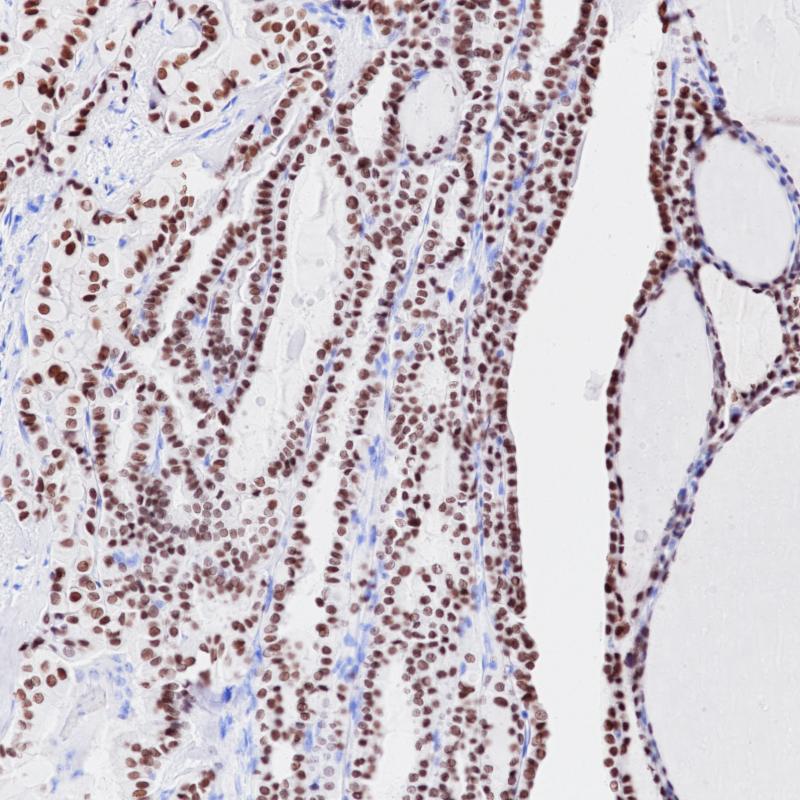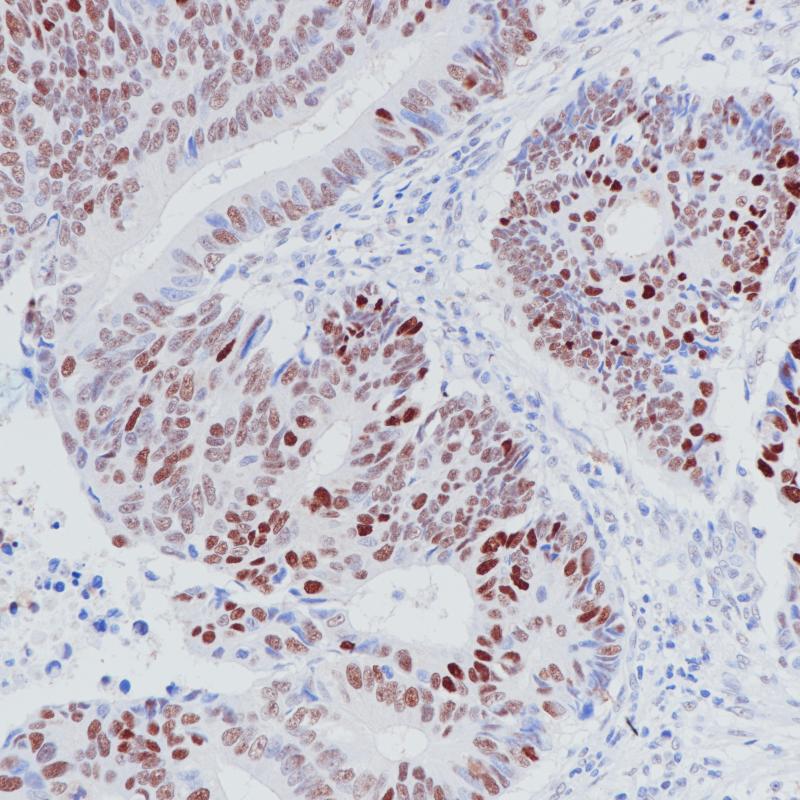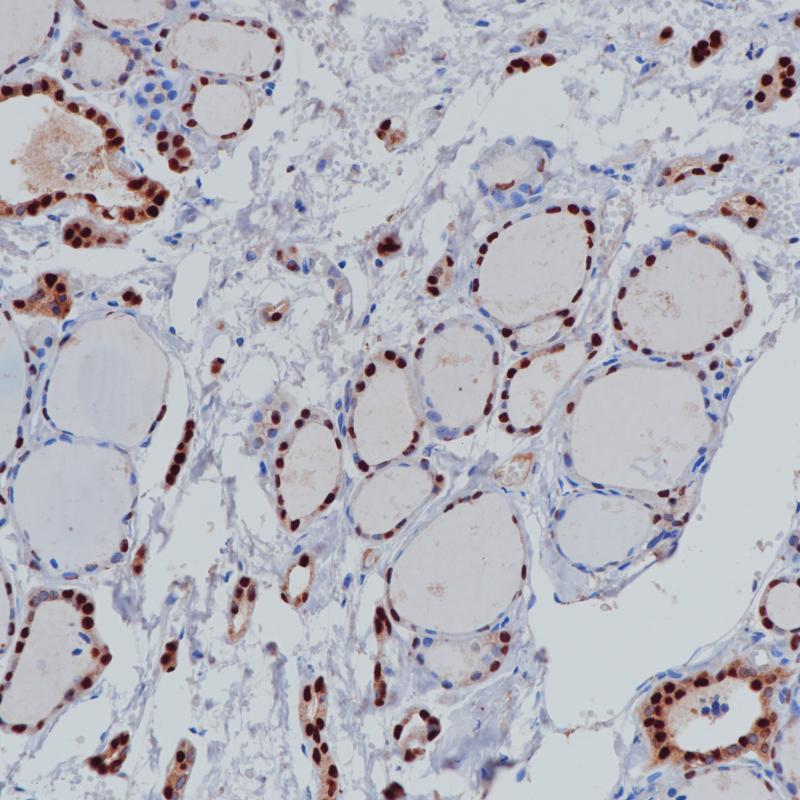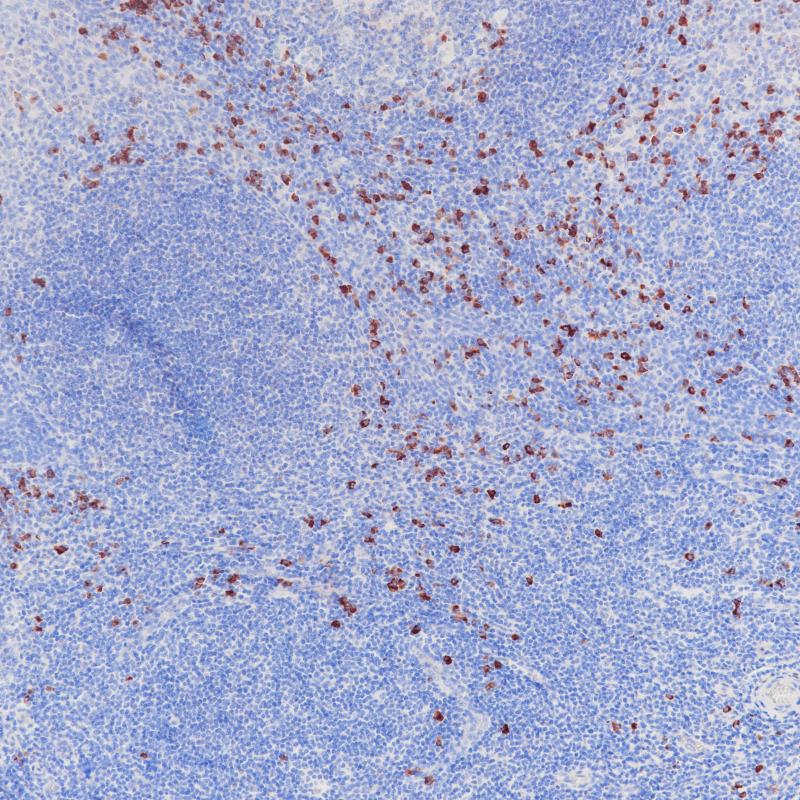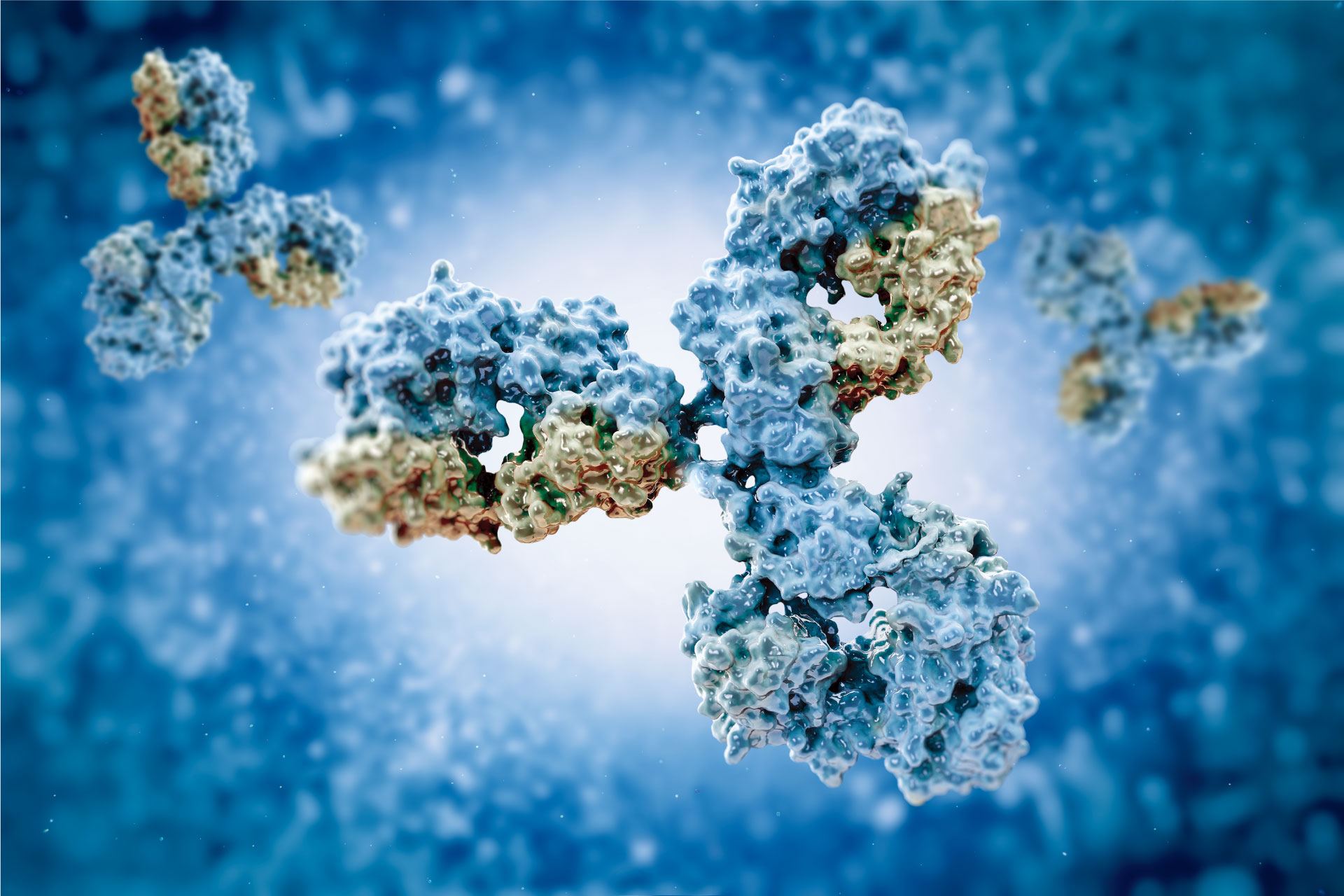
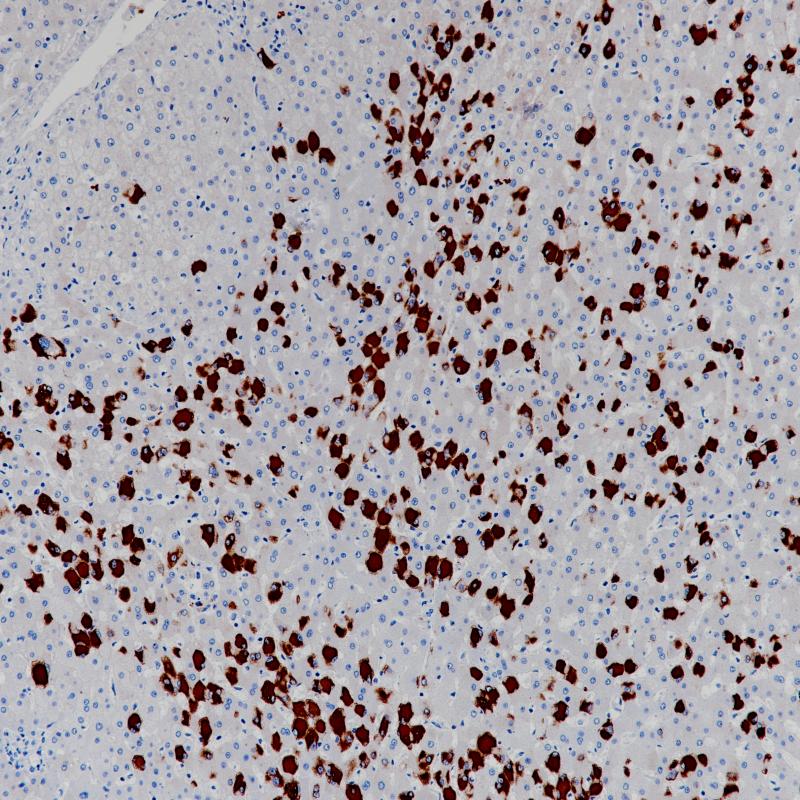
HBV infection of liver
HBSAg Recombinant Rabbit Monoclonal Antibody
Hepatitis B stool surface antigen (HBsAg) is a glycoprotein on the surface of hepatitis B virus. After infection with HBV, HBsAg appears as first virus marker. HBsAg can be found in the blood, saliva, breast milk, sweat, tears, nasopharyngeal secretions, semen and vaginal secretions of patients 2 to 6 months after infection with hepatitis B virus, and 2 to 8 weeks before the elevation of alanine aminotransferase, a positive result can be detected in the serum. HBsAg antibody is mainly used in the diagnosis of hepatitis B virus.
Specifications
- Catalog No.
- BX50247
- Clone No.
- BP6224
- Application
- IHC-P
- Subcellular location
- Cytoplasm
- Control
- HBV infection of liver
- Recommended method
- HIER
- Volume
- 100μl/vial, 1ml/vial
- Dilution
- 1:100-1:200
- Immunogen
- Recombinant fragment within Human HBsAg was usedas an immunogen.
Reference
1. Amano H, et al. (2021) Viruses 13, 2216.
2. Salpini R, et al. (2015) Hepatology 3, 823-833.
Support Documents
Order
- E-mail : sales@biolynx.cn
